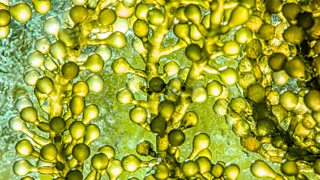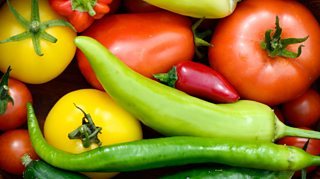Has Covid-19 killed the wild meat trade?
The global trade in wild meat hit the headlines when it was linked to the Covid-19 pandemic, which may have started in an animal market. But what do we mean when we talk about wild meat, and would banning it prevent future pandemics?
In The Food Programme, Dan Saladino explores a multi-billion dollar industry that most people know little about. Here are a few things we learned.
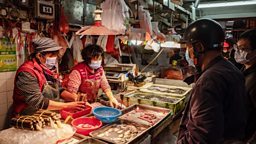
What is wild meat?
Meat from wild animals is eaten by people all over the world – from deer and rabbits to porcupine and antelope.
But although this kind of consumption is often legal, there’s also a vast, illegal global trade in wild animals, including snakes, pangolins, chimpanzees and elephants. It includes critically endangered creatures that are hunted, shipped around the world and sold under the radar as luxury foods or for use in traditional medicine.
-
![]()
The Food Programme: Why Eat Wild Meat?
Dan Saladino looks at the legal and illegal trade in wild meat.
EJ Milner-Gulland, Professor of Biodiversity at the University of Oxford, says the wild meat trade presents “a very complicated picture, with some people just earning their livelihoods and getting their food and just trading it within their villages, right the way through to this massive, illegal, large-scale trade in endangered species.”
How big is the industry?
Because so much of the activity is covert it’s hard to find a precise figure, but the illegal wild animal trade is estimated to be worth around $10 billion a year. This makes wild meat the fourth largest of all illegal trades, below guns and at a similar level to human trafficking in terms of revenue.
It’s a fast-moving international market too. Milner-Gulland explains: “The thing about the illegal wildlife trade now is that because the world is so connected, you could be hunting a pangolin in the forests of Gabon one day, and then within a day or so it could be on someone’s plate in Vietnam.”
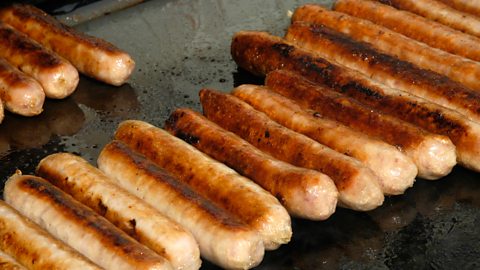
What influences the food choices you make?
Why do some people make different choices from the crowd?
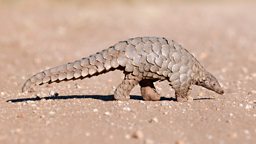
What’s illegal exactly?
This is where it gets complicated. For example, Milner-Gulland explains that in China, eating products from the endangered pangolin is outlawed, but there’s an existing stock of pangolin scales that can be bought legally in pharmacies for medicinal use.
She says, “there’s this blurring between what’s medicinal and what’s food, and this blurring between what’s legal and what’s illegal. It’s very hard to unpick that.”
Similarly, the saiga antelope’s horns have long been used in traditional medicine. But although the saiga is under threat of extinction, in Singapore you can still buy drinks containing its horn in many shops.
This, Milner-Gulland says, is because “Singapore has got a stockpile, and that means that it’s seen as legal if you’re using stockpiled horn even though it’s a critically endangered species.”
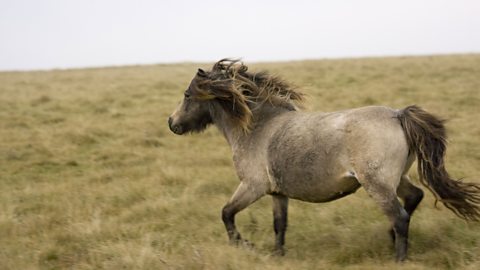
Would you eat pony meat?
Charlotte Faulkner has developed a range of pony meat to save the Dartmoor ponies.
Why is everyone talking about wild meat?
The wildlife trade hit the headlines when it was linked to the Covid-19 outbreak via a market in the city of Wuhan, China.
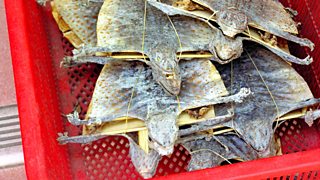
It’s been suggested that this may have been where the virus first made the jump from an animal to a human.
As a result, China has introduced new laws to stop the trade in wild animals, and begun strictly policing places where animals are sold.
There has also been intense scrutiny of the wildlife trade and calls for a global ban on wild meat.
How can wild meat spread disease?
Food writer Fuschia Dunlop explains, “there’s known to be a risk that [at] markets where you have lots of different kinds of creatures in close proximity with each other and with human beings, in quite stressed conditions, that you do get circumstances where so-called zoonotic diseases can mutate and can jump from animals to humans.”
Have diseases come from animals before?
Yes, and not just from wild creatures. Smallpox, whooping cough, mumps and measles all came from farmed animals before spreading among people.
The illegal wild animal trade is estimated to be worth around $10 billion a year.
Professor Andrew Cunningham, an expert in animal diseases at ZSL, explains that the history of measles, which came from cattle, shows how trade in animal products enabled zoonotic diseases to travel around the world.
And when Europeans colonised the Americas in the 15th century, the animal-derived illnesses they brought with them caused millions of deaths among indigenous people.

Flexitarians: is meat-eating dying out?
Are you one of the growing band of "flexitarians"?
Is a ban on wild meat the answer?
Professor Milner-Gulland says banning wild meat is too simplistic a solution, since our industrialised food system and the environmental damage it causes are also increasing the risk of future disease outbreaks.
She says that “if you look at pandemics in general, more than half of them have come from domestic livestock”. So, if we want to live in harmony with nature and reduce the chances of new illnesses taking hold, “we should think about, how do we change that globalised food system so that we’re not destroying nature in order to raise more and more intensive domestic livestock for our own use?”
Crucially, anthropologist Alyssa Crittenden points out that any policy on wild meat must not ignore the needs of communities that rely on it as an important part of their diet and way of life. She says this would be “really unethical” and that “to completely disregard these indigenous food systems... threatens cultural survival. It threatens these vital knowledge systems. Both of which contribute centrally to things like biodiversity and ecological integrity that affect all of us.”
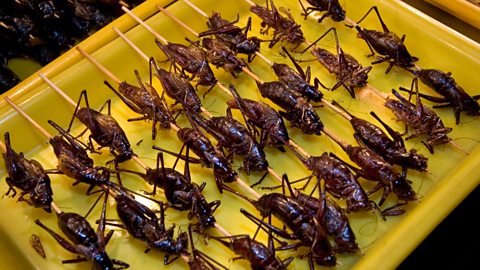
The food of the future: insects
Farmers are planning to turn to insect production as a valuable source of protein.
More from Radio 4
-
![]()
The Food Programme: Why Eat Wild Meat?
Dan Saladino looks at the legal and illegal trade in wild meat.
-
![]()
Pond scum: what you need to know about this peculiar food
Could humble pond scum be the secret to securing food for the world's growing population?
-
![]()
How Instagram has changed the food we eat
Some of the ways in which social media platforms have fed what we eat.
-
![]()
Seven things you didn't know about organic food
From dancing cows to the health benefits, here are some fascinating facts about organic.

